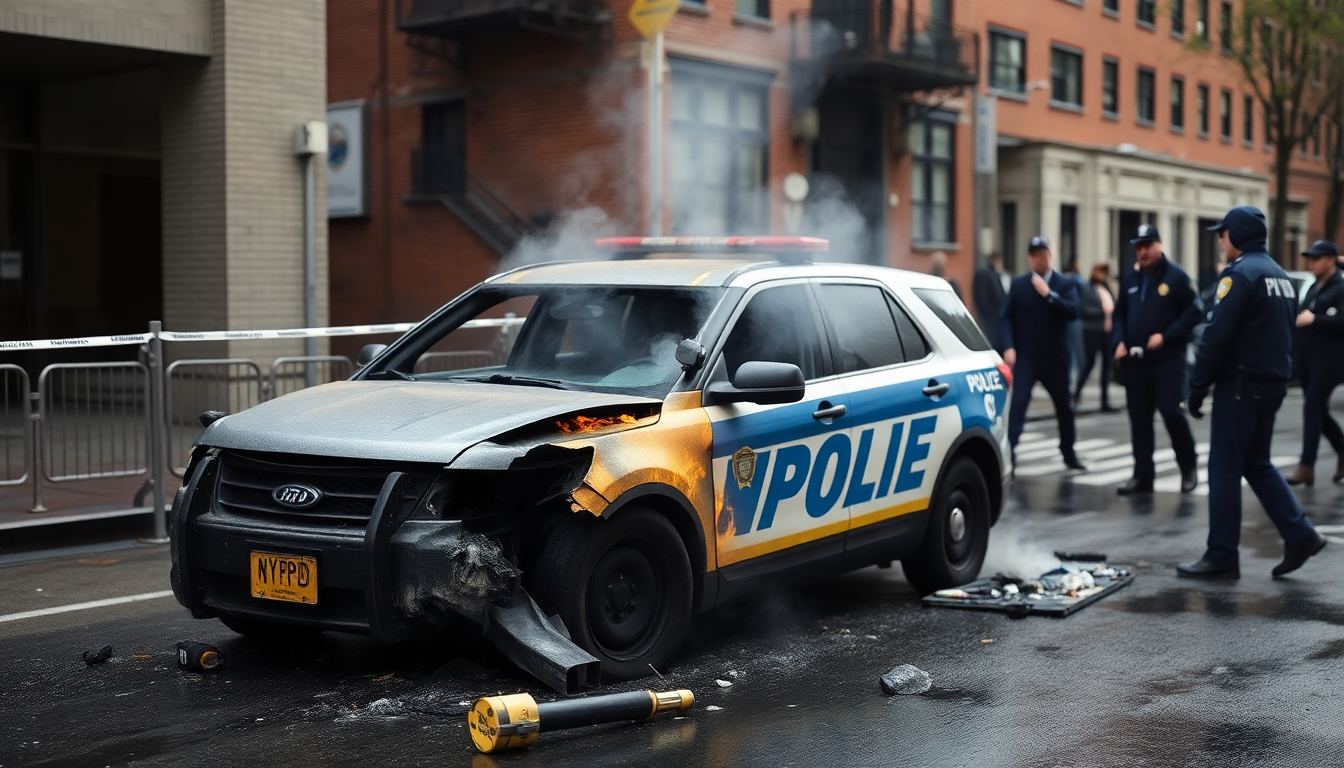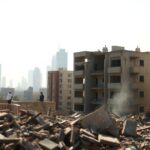Table of Contents
The recent arson incident involving New York City Police Department (NYPD) vehicles has captured public attention, shining a light on crucial issues related to public safety and legal accountability. Back in mid-June, 21-year-old Jakhi Lodgson-McCray from New Jersey turned himself in after being identified as the main suspect in this shocking crime spree.
But this case isn’t just about serious allegations of arson; it also raises important questions about how effective our current legal measures really are in tackling such incidents.
Details of the Incident
On June 12, 2023, McCray was caught on surveillance footage climbing over a fence to access a parking lot filled with NYPD vehicles in Brooklyn.
Over the next 32 minutes, he allegedly set fire to ten police cars and a trailer, racking up damages that exceeded a staggering $800,000. This brazen act took place just before a weekend of planned protests, leaving the NYPD stretched thin and scrambling for resources.
Authorities have characterized McCray’s behavior as reckless, putting not only police officers but also innocent bystanders at risk.
To make matters worse, McCray was arrested the following day in connection with another incident where he burned Israeli and American flags outside the Israeli consulate—an act that highlighted the rising tensions in the city.
Initially charged with lesser offenses, it wasn’t long before forensic evidence and video footage tied him directly to the arson. Reports indicate that the U.S. Marshals were on the verge of capturing him when he ultimately decided to surrender.
Legal Ramifications and Public Safety Concerns
This case has ignited a heated debate about public safety and the legal systems designed to manage violent and destructive behavior. Federal prosecutors have pointed out that McCray’s actions posed an extraordinary risk, not just to police officers but also to law-abiding citizens in the vicinity.
They argue that the nature of the crime warrants a presumption of detention, given the significant dangers involved.
Moreover, this incident brings to the forefront concerns about New York’s cashless bail law, which limits pre-trial detention for non-violent offenses. Critics contend that such laws could unintentionally allow individuals with a history of reckless behavior to evade appropriate consequences, potentially endangering public safety. McCray’s prior arrests, including charges for disorderly conduct and resisting arrest, only emphasize the need for a serious reevaluation of these legal policies.
Implications for Future Crime Prevention
As this case continues to unfold, it serves as a vital reminder of the ongoing challenges law enforcement faces in urban settings. The NYPD has reaffirmed its commitment to ensuring community safety and rebuilding public trust, highlighting the need for effective responses to incidents like this. The legal outcomes of McCray’s case could very well shape future policies and tactics for dealing with similar situations.
In light of these events, it’s crucial for city officials and law enforcement agencies to work together on strategies that not only deter crime but also create a sense of security for residents. Initiatives focused on public awareness, community engagement, and a thorough examination of existing legal frameworks could prove essential in preventing such incidents from happening again.
In conclusion, the recent arson case in New York City underscores significant legal and societal issues that demand immediate attention. As the judicial process unfolds, the spotlight must remain on enhancing public safety and ensuring that those who threaten community well-being are held accountable.





